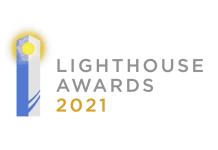
Check out how the Top 10 customer engagement trends for 2015 are shaping up in this series. If you missed #8 last week, you can read it here!
In 2015, more data will be sourced to drive more and more powerful insights, and the most profound impact will be with consumers who choose to participate in that journey.
The key word here is “choose.”
Much of the discussion today is around structured and unstructured data—how quickly we’re moving beyond the blanket discussion of Big Data. Structured data for the most part is already permission-based: the products I’ve purchased, the channels through which I’ve shopped, the profile information that I’ve provided all combine to create a nice picture of my past behavior and a solid prediction into my future propensities.
But it’s the unstructured data that provides not only the richer profile of my stated and unstated intentions, but the greater level of real-time context that defines my current state of mind, my current location, and much wider set of influences on my behavior.
Let’s not fool ourselves. Where I am and with whom or what I digitally engage is pretty intimate. We’ve all been exposed to this idea of the “creepy factor”—the effect of brands lurking on our digital movements and pouncing with a well-timed, well-meaning offer that clearly steps over the line. While we’ve come to accept that cart abandonments will often trigger a follow-up email (and many of us are still not comfortable with that), marketers struggle with the balance of intimacy, relevance, and creepy when the sources of that insight is personal and unstructured.
The question therefore is, does an opt-in program (like a loyalty program) explicitly give marketers a wider view and more accepted permission to use these types of unstructured data? Our experiences clearly lead to yes—that the combination of permission and rewards creates a level of transparency and trust that opens the door to incredibly intimate and relevant customer engagement. By rewarding for that permission, customers opt-in to data collection and the use of that data to better profile their intentions and communicate in the precise moments of truth.
Increasingly, opt-in loyalty is becoming the cost of entry for gathering, storing, and utilizing unstructured data (e.g. location, click stream behavior) and is particularly topical in Europe where the personal data privacy rules are more strict than in the Americas and much of Asia. Gartner reports, “By 2017, 80% of the top 100 ICT-5 ready nations will roll out privacy mandates for managing personal information, a 33% increase from 2013.” In another report, Gartner says, “A strong technology drive, fast innovation in Big Data and lack of experience with techniques such as automated discovery can easily lead to an environment where privacy risks, and even ethical concerns, are ignored.”
If the future of digital marketing and customer engagement continues to migrate to tapping unstructured data, the future of super-successful digital marketing and customer engagement likely flows through opt-in loyalty marketing.





